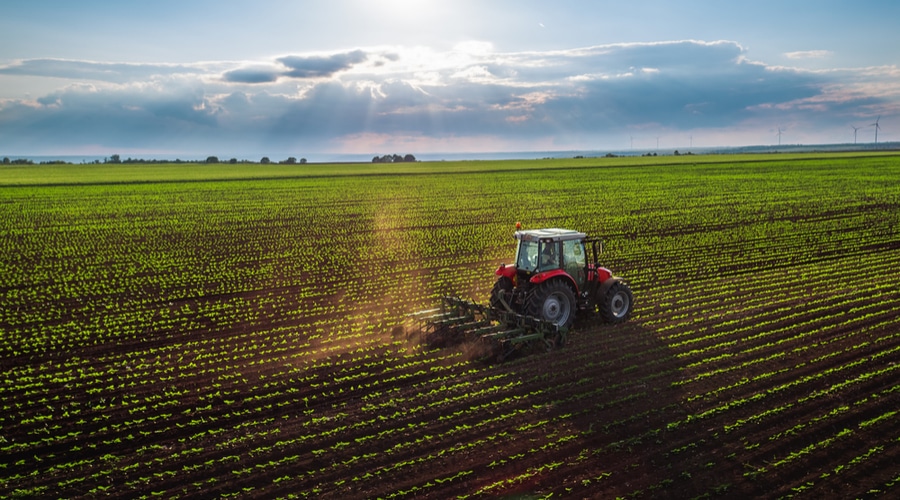
Marc Andreessen famously once said that “software is eating the world”. Well, there is one part of the world that technology has not yet devoured – though the field is a wide-open opportunity.
Food and agriculture is a major segment of the world economy, representing close to $10trn in market value. The complex value chain behind it has a fundamental impact on human lives and our environment. According to the FAO, 2.5bn people derive their livelihood from farming. Agriculture accounts for close to 70% of global freshwater consumption and a quarter of greenhouse gas emissions .
With the global population expected to increase to 10 billion by 2050, our food system will be increasingly strained. Stagnant crop yields, inefficiencies in the supply chain resulting in 40% waste from seed to plate and a mismatch between where food is produced and where it is needed are all major challenges requiring innovative solutions.
Food and AgriTech are about more than positive impact and fuzzy feelings – feeding the planet more effectively is an opportunity that can create enormous value for entrepreneurs, investors and corporates, as well as the planet itself. Venture capital is waking up to this opportunity, with the sector taking $10.1bn in investment in 2017, according to AgFunder .
Large corporates are increasingly in tune with innovation and are beginning to drive larger exits, like DowDuPont’s $300 million acquisition of farm management software provider Granular and John Deere’s buy-up of robotics startup Blue River Technology for $305m.
Yet there is something in AgriTech that hasn’t quite clicked in to high gear.
Overall, some sub-sectors are proving to be more fertile than others. Whilst areas like food delivery and bio-tech are seeing remarkable and rapidly accelerating innovation, others such as precision farming, food traceability or alternative proteins have yet to see massive and disruptive winners emerge. There is no Facebook or Uber of food and agriculture. The last near-unicorn exit was the sale of Climate Corp to Monsanto five years ago.
The rewards on offer are huge, but it is important to recognise that agriculture, unlike other industry sectors which can straightforwardly be suffixed with “-tech”, is fundamentally different. Software continues to digitise traditionally analogue sectors from healthcare to retail trade, while biotechnology and genomic engineering are reshaping the pharmaceutical and human therapeutics industry. But our food system continues to lag in its adoption of these two pillars of innovation and has yet to be fundamentally disrupted.
Profiting from food and AgriTech, then is going to require entrants to Think Different, as someone once said…
Patience is a virtue
Adoption patterns in consumer software are well established by now. Development and distribution costs have plummeted. The playbook calls for rapid validation, shipping quick and gaining feedback to put in to an iterative cycle.
In farming, that won’t work. When you are selling to a farmer, you typically need to wait an entire season for most crops to yield any results. There is no “fail fast” here – whilst it costs software users nothing to try the latest freemium app, a typical farmer’s life consists of just 40 growing seasons, meaning every product test risks destroying a fortieth of your customer’s lifetime income. The stakes are high.
Learn the ropes
You may know software and services, but understanding a farmer’s day, how soil type impacts crop growth or the ins and outs of food safety and logistics is a whole new ball game. This is complex stuff, with a steeper learning curve than most and requiring specific domain expertise
Experience in a technology industry like app development isn’t necessarily going to stand you in good stead at the cattle market. In order to capitalise on this industry, you need to take the time to understand its processes.
Taking Stock
Food and agriculture is driven by some of the world’s largest corporations, from Bayer Monsanto and DowDuPont in agricultural inputs, to Nestle and Kraft Heinz in branded food manufacturing, and Walmart and Tesco in grocery retail. These players continue to gain scale and wield more influence, with Bayer acquiring Monsanto for $63bn in June. Innovators need to both understand and lean in to the dynamics of his uniquely concentrated value chain. As a company looking to break into the space, you will need to take into account existing networks, distribution channels and strategies of the incumbent corporates who dominate it, and more often than not collaborate with them to gain traction.
Future of food
Agriculture and food technology could be the biggest, most impactful incursion of technology in to a traditional industry so far. It could also be the most lucrative.
Beside the sheer need to improve global food production, I am excited to see the changes in attitudes and taste at the consumer level, when it comes to food.
No longer are many of us buying food as cheaply as possible just to fill our belly. People are making conscientious decisions around food provenance, location and health impacts. These factors and more can be advocated for by digitisation, helping shrink the supply chain and leading to more, better food.